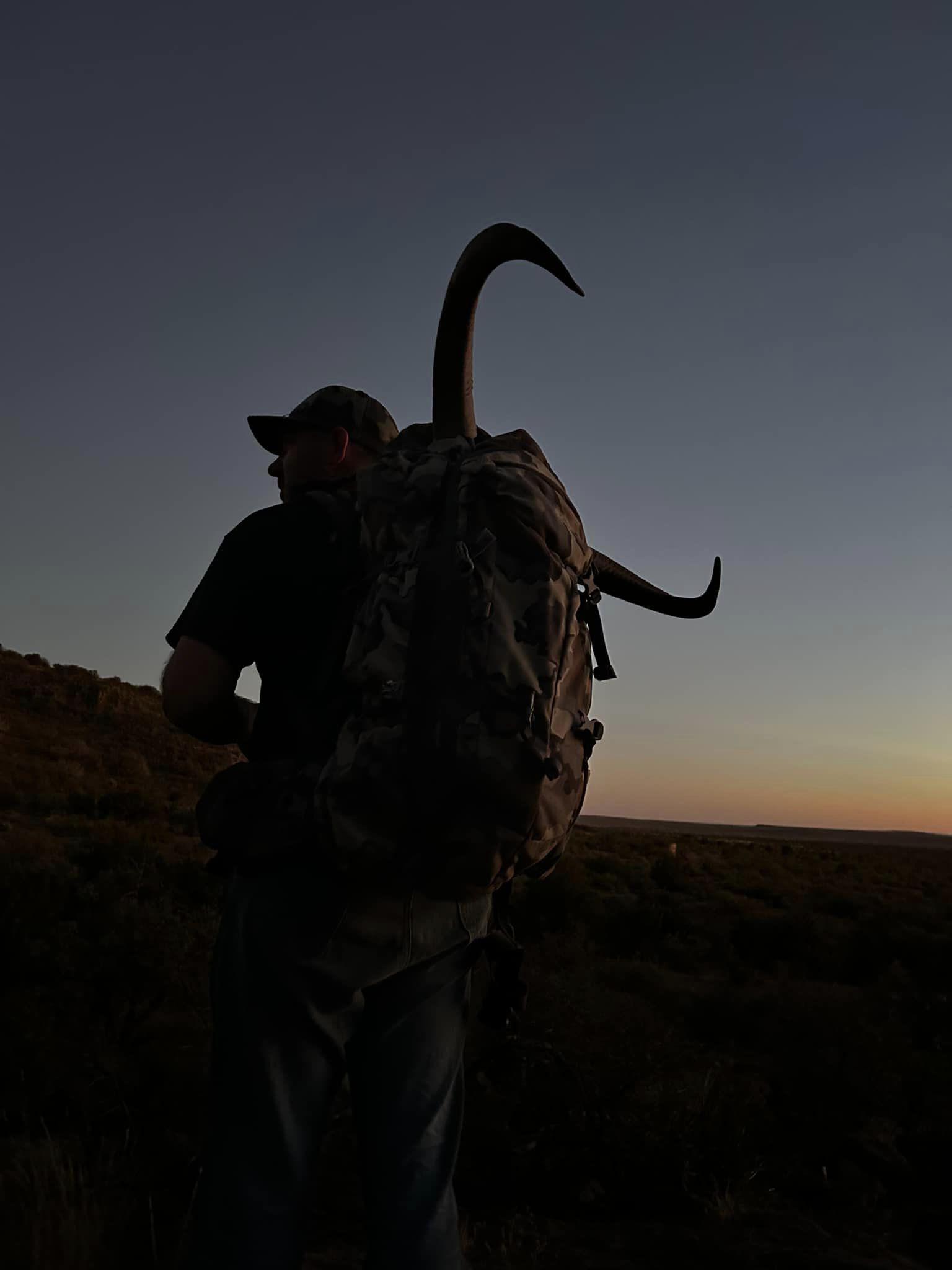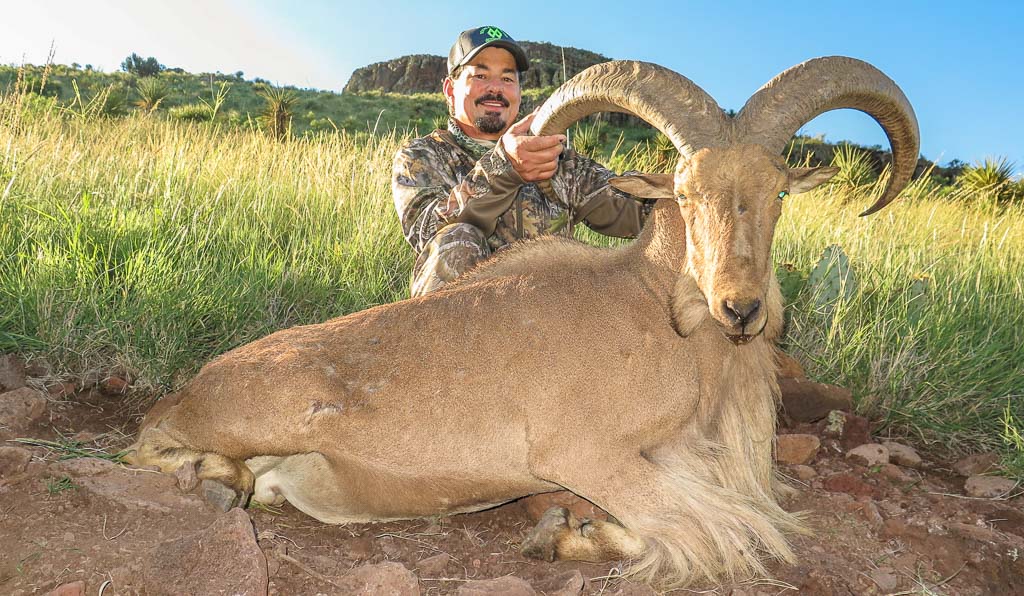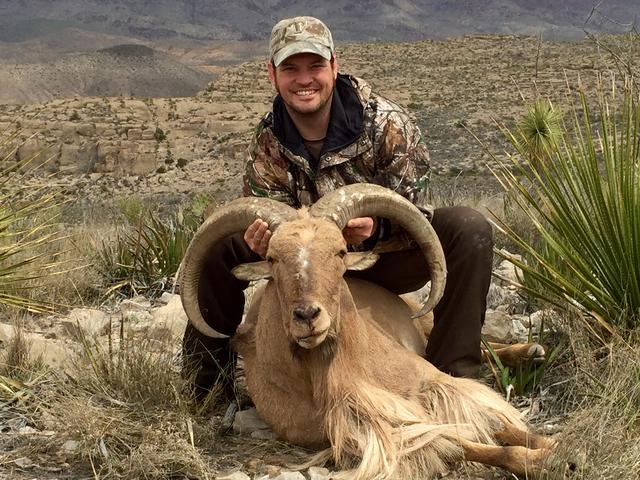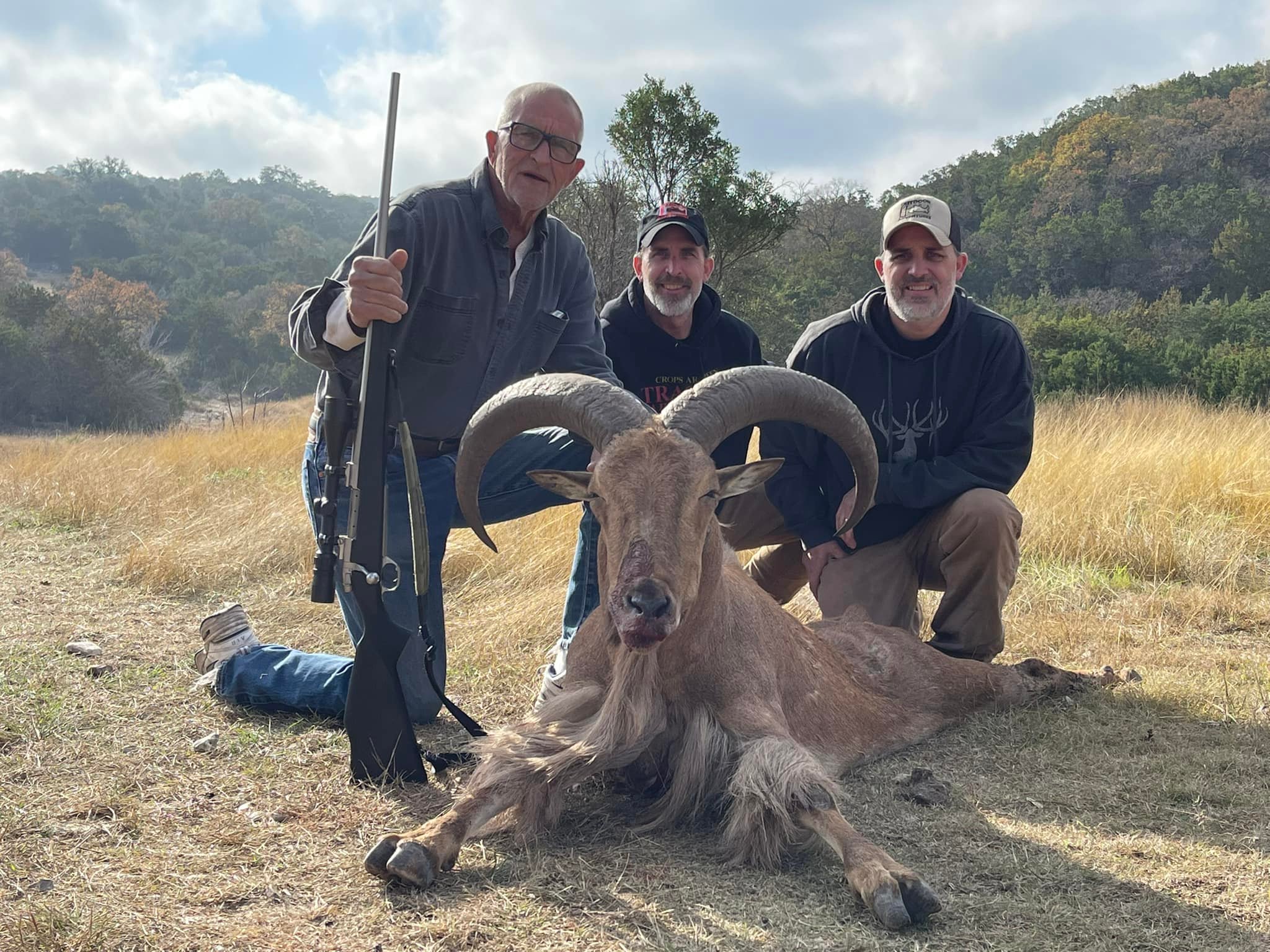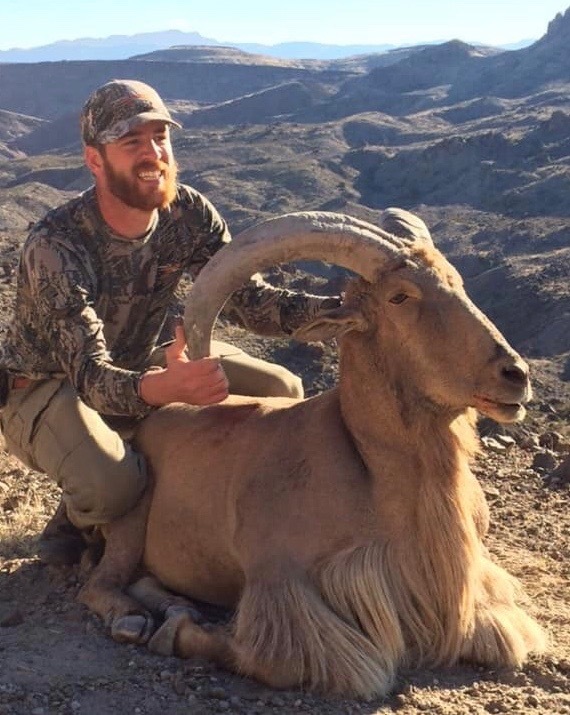A free-range aoudad (Barbary sheep) hunt in Texas is a challenging and exhilarating experience. Aoudads, originally from the rocky mountains of North Africa, were introduced to Texas in the 1950s as an exotic game species. Since then, they have thrived in the rugged terrain of West Texas, particularly in the Trans-Pecos region, due to their adaptability to dry, mountainous environments.
Photo Credit: Free-Range Aoudad Package / Brady / Texas
The History of Aoudad in Texas
Aoudad were brought to Texas initially for exotic game ranches and hunting opportunities, but they quickly escaped into the wild. Their ability to survive in harsh conditions, coupled with their resistance to drought, allowed them to establish stable populations in areas like the Palo Duro Canyon, Big Bend, and other parts of West Texas.
With no natural predators in the region, their numbers grew, and they are now considered a naturalized species.
Today, aoudad populations are managed by the Texas Parks and Wildlife Department, but they are still classified as exotic, meaning they can be hunted year-round with no bag limit on private lands.
Photo Credit: Free Range Aoudad Hunt / Alpine / Texas
The Free-Range Aoudad Hunting Experience
Hunting free-range aoudad in Texas is one of the most physically demanding hunts available. The terrain in West Texas is rugged, consisting of steep, rocky cliffs, deep canyons, and vast expanses of desert. Aoudads are incredibly wary animals with excellent eyesight, making it difficult to stalk within shooting range. They are known for their agility in the mountains, often traversing seemingly inaccessible cliffs with ease. Hunters need to be in excellent physical condition to keep up with these sheep in their natural environment.
Photo Credit: 4-Day Free Range Texas Aoudad Hunt / Van Horn / Texas
What to Expect:
- Location and Terrain: Most free-range aoudad hunts take place in West Texas on large private ranches that span thousands of acres. The terrain is rough, with elevations ranging from 2,500 to 5,500 feet, featuring rocky outcroppings, sparse vegetation, and vast open spaces.
- Physical Demand: Expect to cover long distances on foot over uneven, steep terrain. Hunting aoudad often involves hiking up and down hills and ridgelines while glassing for sheep from a distance.
- Spot-and-Stalk: Since aoudad are extremely alert, spot-and-stalk hunting is the most common method. Hunters typically glass the terrain from high vantage points, looking for herds of aoudad. Once a herd is located, a challenging stalk begins to get within rifle range, often 300 to 500 yards or more.
- Rifle and Gear: A good long-range rifle (caliber such as .308, 6.5 Creedmoor, or .300 Win Mag) with a quality scope is essential for these hunts. Sturdy boots and a pack for carrying water, food, and extra gear are also important due to the rugged nature of the hunt.
- Trophy Opportunities: Mature aoudad rams can weigh up to 300 pounds and sport impressive horns that curl backwards. A trophy ram’s horns can exceed 30 inches in length, with a massive body and a thick mane of hair along its neck and chest.
Photo Credit: Whitetail Buck & Ram Combo Hunt / Leakey / Texas
Why Hunt Aoudad?
Aoudad provide a challenging hunt due to their elusive nature and the tough terrain they inhabit. Their excellent eyesight and wariness make them a rewarding game species for hunters looking for an adventure. Additionally, hunting them helps manage their population and reduce competition with native species like mule deer and bighorn sheep.
Photo Credit: 4-Day Free Range Aoudad / Van Horn / Texas
When to Hunt Aoudad
The best time to hunt aoudad in Texas is during the cooler months from late fall through early spring, typically from November to March. These months offer more comfortable temperatures for hunting and better visibility in the landscape. Here’s a breakdown of why this time of year is ideal:
1. Cooler Weather
November to March brings cooler temperatures, which makes hiking and stalking more manageable. The West Texas region, where aoudad hunting is most popular, can be extremely hot during the summer, with temperatures reaching well over 100°F. Hunting in cooler weather not only makes the hunt more enjoyable but also reduces the risk of heat exhaustion and dehydration.
2. Better Visibility
In the cooler months, the vegetation in West Texas tends to die back, offering better visibility for spotting aoudad. The grasses and shrubs that can obscure your view in summer are lower, which makes it easier to glass (use binoculars or spotting scopes) for aoudad from a distance.
3. Increased Animal Activity
Aoudad are more active during cooler temperatures. They tend to move and feed more during the day when it’s not too hot, making it easier to spot them. In the summer, they may be more nocturnal or limit their activity to early morning and late evening to avoid the extreme heat.
4. Comfortable Conditions for Spot-and-Stalk Hunting
Since aoudad hunting is often spot-and-stalk, the cooler temperatures allow hunters to stay out in the field longer without getting fatigued from the heat. In the cooler months, you can spend more time glassing from high vantage points and stalking across the rugged terrain without the oppressive heat that summer brings.
5. Seasonal Flexibility
Aoudads are classified as exotic species in Texas, meaning they can be hunted year-round without bag limits on private lands. However, hunting them during the late fall through early spring is preferable for all the reasons mentioned above, especially comfort and animal activity.
Summary of Ideal Months:
- November – March: Best conditions for temperature, visibility, and animal movement.
- April – October: Possible to hunt, but expect higher temperatures and less comfortable conditions. You may need to adjust your hunting hours to early morning and late evening during these months.
In summary, hunting aoudad in Texas is most enjoyable and productive during the cooler months, from November to March, when the weather is mild, visibility is better, and the animals are more active during daylight hours.

